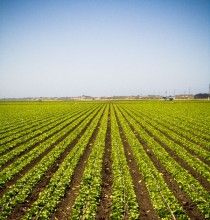CA water rights hit hard
by James Poulos | June 14, 2015 7:30 am
 [1]After floating the possibility for months, authorities followed through on threatened curtailments on California’s most senior water rights holders.
[1]After floating the possibility for months, authorities followed through on threatened curtailments on California’s most senior water rights holders.
“The action by the State Water Resources Control Board, after weeks of warnings, affects 114 different water-rights holders in the Sacramento and San Joaquin river watersheds, as well as the Delta region,” the Sacramento Bee reported[2]. Not since 1977 have restrictions dug so deep into the state’s so-called riparian rights system.
Only the beginning
State officials told[3] the New York Times that further restrictions are all but a foregone conclusion, with reassessments to be conducted on a weekly basis.
“The reductions announced Friday apply to more than 100 water right holders in the San Joaquin and Sacramento watersheds and delta whose claims to water came after 1903,” reported the Times. “While the cuts will fall primarily on farmers, some will affect small city and municipal agencies, as well as state agencies that supply water for agricultural and environmental use. Water can still be used for hydropower production, as long as the water is returned to rivers.”
 [4]Despite the blanket expansion of cuts, some rights holders fared better than others. San Francisco, where rights date to 1901, avoided the strictures for now. Meanwhile, in the state’s agricultural heartland, the pain was sharply felt. According to the Bee, residents drawing water from the federal Central Valley Project and the State Water Project “have lost about one-third of their water this year. The University of California, Davis, estimates that more than 560,000 acres of farmland will sit idle.”
[4]Despite the blanket expansion of cuts, some rights holders fared better than others. San Francisco, where rights date to 1901, avoided the strictures for now. Meanwhile, in the state’s agricultural heartland, the pain was sharply felt. According to the Bee, residents drawing water from the federal Central Valley Project and the State Water Project “have lost about one-third of their water this year. The University of California, Davis, estimates that more than 560,000 acres of farmland will sit idle.”
A different future
Deep into the most serious and protracted challenge of his time in office, Gov. Jerry Brown has tightened the taps with a methodical urgency and a quintessentially Californian sort of spirituality. In recent remarks for the Los Angeles Times, Brown took[5] a cosmic view of California’s future, weaving conservationism and futurism together in an extended metaphor of “spaceship Earth.”
“We are altering this planet with this incredible power of science, technology and economic advance. If California is going to have 50 million people, they’re not going to live the same way the native people lived, much less the way people do today,” said Brown. “You have to find a more elegant way of relating to material things. You have to use them with greater sensitivity and sophistication.”
But Brown affirmed that residents will have to pay for their enlightened approach to growth. “A lot of heavy lifting will be done by local water districts, and that will show up in your water bill,” he told the Times.
To the courts
Not all Californians, of course, share Brown’s vision, or that of the Water Resources Control Board. The result, analysts predicted, would be a flood of litigation. “Within hours of the board’s announcement,” the Los Angeles Times recounted[6], “officials of the Oakdale Irrigation District in the San Joaquin Valley issued a statement saying that they were ready to seek a court injunction to put a hold on the curtailment.”
Their case appeared to hinge on claims that the WRCB used inadequate information on water use to overstep its regulatory authority. Oakdale Irrigation District chief Steve Knell suggested to the Times that California “doesn’t have the authority to manage pre-1914 rights, nor does the board have accurate data on diversions by junior rights holders.”
But the board blamed the cuts’ rough consequences on the state’s inflexible rights regime. “Those ordered to stop diverting from rivers and streams have other options, including tapping groundwater, buying water at rising costs, using previously stored water or leaving fields unplanted,” officials said[7], according to the Associated Press. WRCB executive director Thomas Howard was blunt: “It’s going to be different story for each one of them, and a struggle for all of them.”
- [Image]: http://calwatchdog.com/wp-content/uploads/2015/05/water.jpg
- reported: http://www.sacbee.com/news/state/california/water-and-drought/article23849281.html
- told: http://www.nytimes.com/2015/06/13/us/california-announces-restrictions-on-water-use-by-farmers.html?_r=1
- [Image]: http://calwatchdog.com/wp-content/uploads/2015/04/Farm.jpg
- took: http://www.latimes.com/local/lanow/la-me-ln-brown-drought-20150609-story.html#page=1
- recounted: http://www.latimes.com/local/lanow/la-me-ln-drought-water-rights-20150612-story.html
- said: http://www.foxnews.com/us/2015/06/13/in-california-nearly-ironclad-decades-old-water-rights-halted-amid-lingering/
Source URL: https://calwatchdog.com/2015/06/14/ca-water-rights-hit-hard/